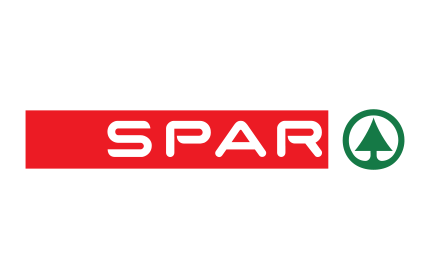By David Harding-Brown, CEO, ecoveritas

The government’s consultation update on packaging waste has sent shockwaves through the packaging and branding communities.
Launched on March 24, 2021, the consultation invites responses by June 4, by which time interested parties from across the spectrum of the packaging world have to figure out how they are going to absorb the financial costs of a system where producers are responsible for the full net costs of managing packaging disposal.
To put this in perspective, this is an industry sector that has in recent times been handed an EU Plastics Packaging Levy, a UK Plastics Packaging Tax, the continual threat of a DRS system, a global shortage of pulp capacity due to the rise of e-commerce and anti-plastics, and a huge increase in many Packaging Recovery Note (PRN) costs. Not to mention, a certain global pandemic, staff furlough or redundancies, bans on straws, stirrers and cotton buds, and High Street retail demand falling off a cliff.
Producers were bracing for a £1.5bn hit indicated in previous Extended Producer Responsibility (EPR) consultation stages, but this estimate has now risen to a projected £2.7bn, a considerable increase. The government position is intended to kick-start producers and packaging designers to deliver innovation and sustainable packaging solutions or face additional penalties for placing under-performing materials onto the market.
How the industry will achieve this is a dilemma. The financial penalties involved in the new EPR world are intended to act as a catalyst for innovation, substrate and format development, smarter production methods and increased efficiency across the supply chain. But these processes take investment, both in time and money; for smaller brand owners and start-ups, this could effectively signal the end for many small enterprises that operate on very tight margins and low capex in a highly competitive market.
Consider that it’s already difficult enough to launch a new brand – depending on which reference source you believe, some 30,000 new consumer products are launched annually and around 80-90% of these fail, mostly due to lack of preparation, strategy, speed to market or commercial robustness. Although packaging design and format specification may not be the sole cause of a product failing, it’s certainly a contributing factor. Bad design will remain with the product packaging way after use by the consumer, through rejection for end-of-life kerbside recycling or unacceptable disposal methods. Today, modern savvy consumers turn away from brands and packaged products perceived as out of step with their own high sustainability values.
It may be that many brand owners underestimate the skills needed to deliver these packaging innovation processes, imagining a DIY effort will do, but even for professionals it’s a tricky job to get right. Within the professional ranks there are many alternative materials championed as the best options for sustainable innovation, yet it involves a thorough understanding of Life Cycle Assessment (LCA) and materials performance to accurately navigate through the pros and cons of packaging design. In the UK alone, there are some 85,000 people employed directly in the packaging manufacturing and design sector, that’s around 3% of the UK manufacturing workforce. If these proposed EPR reforms are implemented, the available budgets for professional structural and graphic designers, substrate developers and sustainability experts to be used effectively on packaging development may simply evaporate before this design ‘renaissance’ even begins. In the worst case, it may even place certain jobs at risk due to lack of investment.
Many in the industry are also concerned that, while the packaging sector is staffed by highly trained and experienced professionals with a high level of technical understanding, the industry as a whole has come under fire in recent times for propagating waste, causing marine littering, adding to pollution and contributing to climate change. The search for alternatives to those packaging materials seen as the main culprit in littering is primarily concentrated on plastics (especially single-use), but it’s important that we stay ‘material agnostic’ and follow the science through LCA, not the loudest PR voices.
Some will say in defence of plastic that it was always designed to be a ‘modern miracle’ that does its job well, is cost-effective and has few realistic alternatives with lower carbon impacts. Many critics suggest simply banning plastics or other difficult-to-handle substrates with no alternatives offered but developing new viable materials that have the acceptable manufacturing and disposal characteristics is a skilled job. In packaging’s ideal world, we start with designing out waste first, but again this needs technical ability, insight and knowledge.
The primary reason for packaging is rarely discussed – to protect the product inside, and to deliver it safely to the consumer. Consumers wanted unseasonal produce from global sources on demand, and packaging certainly helped meet that demand. But end of life disposal is part of this deal – once it’s used, the consumer needs to take responsibility for their own ‘waste stream’, and that’s something the manufacturer can’t control at point of disposal, yet potentially will bear the cost.
The principle behind the EPR consultation is that ‘the polluter pays’, but for a truly collaborative approach, the system has to be fair and sustainable. Some may see these reforms as yet another unwarranted attack on an industry already under pressure for just doing its job; the packaging manufacturing and design sectors appear to be heading towards shouldering all the burden. We are seeing growing numbers of professionals entering the sustainability sector, a really welcome development, but to accelerate real advances in packaging innovation we need similar growth in the technical structural design and materials development areas, and that needs investment rather than penalties.
While the industry absorbs these EPR proposals, it also needs to recognise that it’s not all about money – we may see some unintended consequences. Where professional designers and technicians currently drive innovation, this development work may switch to less professional providers, or even not at all. The UK needs a system that recognises that there are many experienced professionals in the packaging industry that are fully aware of addressing the sustainability challenges we face and are acting responsibly. It also must be recognised that consumers are polluters and that simply loading huge costs onto an industry sector, already under a cloud, is not an attractive option. DEFRA’s intended drive ‘to stimulate packaging design and innovation to increase recyclability and lead to other improved environmental outcomes’ is admirable, but we all have a voice and a part to play to make it successful.























